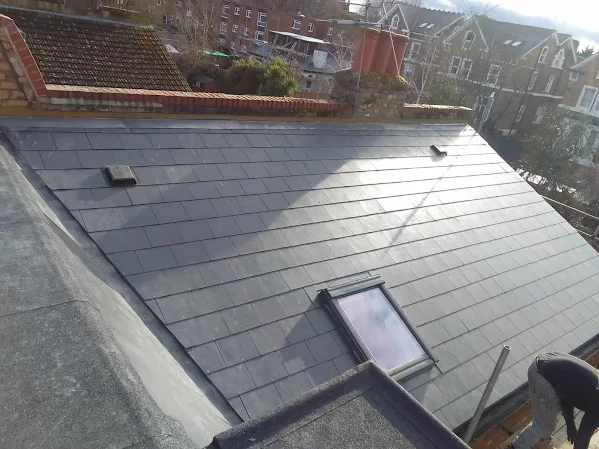+44 7853 968135
Do I need planning permission when removing a chimney?
Chimney removal projects often leave homeowners questioning whether they need official approval before proceeding. The answer depends on several factors including your property’s location, the chimney’s position, and local authority requirements. Understanding these regulations before starting work can save you significant time, money, and potential legal complications.
Most chimney removal projects in the UK fall under permitted development rights, meaning you won’t need planning permission for standard residential properties. However, certain circumstances such as conservation areas, listed buildings, or prominent chimney positions may require formal approval from your local planning authority.
Can I Remove a Chimney Without Planning Permission?
The majority of homeowners can remove chimneys without obtaining planning permission, provided their property falls under standard permitted development rights. These rights allow reasonable alterations to residential properties without requiring formal planning approval. Standard terraced houses, semi-detached properties, and detached homes typically benefit from these automatic permissions.
However, several exceptions apply that could require planning permission for chimney removal. Properties in conservation areas, listed buildings, or those with Article 4 directions may have restricted permitted development rights. Additionally, if your chimney is particularly prominent or contributes to the streetscape character, local authorities might require you to submit a planning application before removal.
Need some Support with your chimney removal? Speak with a member of our Professional Chimney Removal Team here

Can I Remove a Chimney in the UK?
Chimney removal in the UK is generally permissible, but the process involves more than simply demolishing the structure. You’ll need to consider building regulations compliance, structural implications, and weatherproofing requirements for the remaining roof space. Professional consultation with structural engineers and building control officers ensures your project meets all legal requirements.
The removal process typically involves careful dismantling from the top down, proper disposal of materials, and comprehensive roof repairs to maintain weatherproofing. Building regulations approval is almost always required for chimney removal projects, even when planning permission isn’t necessary. This ensures structural safety and compliance with construction standards throughout the removal process.
Does Removing a Chimney Stack Devalue a House?
Property valuation impacts from chimney removal vary significantly depending on local market preferences and architectural context. Many modern buyers view chimney removal positively, appreciating the additional living space and reduced maintenance requirements. Contemporary home designs often favour clean rooflines without protruding chimney stacks, making removal a desirable modernisation.
Conversely, period properties may lose character and market appeal following chimney removal, particularly in areas where original features command premium prices. Victorian and Edwardian homes with original chimneys intact often achieve higher valuations than similar properties with removed features. Consider your local market dynamics and property type before deciding whether chimney removal aligns with your long-term property goals.
| Property Type | Potential Impact | Market Preference |
|---|---|---|
| Modern Build | Neutral to Positive | Clean lines preferred |
| Victorian/Edwardian | Potentially Negative | Original features valued |
| Georgian | Often Negative | Character features important |
| 1950s-70s Build | Generally Positive | Modernisation welcomed |
Are Chimneys Load Bearing?
Most domestic chimneys are not load-bearing structures, but this assumption requires professional verification before removal begins. Chimneys typically support only their own weight and any connecting flue systems, making them structurally independent from the main building framework. However, some properties feature chimneys integrated into load-bearing walls or supporting arrangements that could affect structural stability.
Structural engineers must assess each chimney’s specific configuration to determine load-bearing status accurately. This assessment examines the chimney’s construction method, its relationship with surrounding walls, and any structural connections that might transfer loads. Properties built before 1950 occasionally feature chimneys with load-bearing elements, particularly in terraced housing where party walls incorporate chimney structures.
Construction EraLoad-Bearing LikelihoodAssessment PriorityPre-1900ModerateEssential professional review1900-1950Low-ModerateRecommended structural check1950-1980Very LowStandard assessment sufficientPost-1980MinimalBasic structural review
Planning Permission Requirements for Chimney Removal Projects
Understanding when planning permission becomes necessary for chimney removal helps homeowners navigate the approval process effectively. The UK government provides comprehensive guidance on permitted development rights that covers most residential alteration projects. Most standard chimney removals fall within these automatic permissions, but specific circumstances can trigger planning requirements.
Listed buildings always require listed building consent for any structural alterations, including chimney removal. Conservation areas may have additional restrictions that limit permitted development rights, requiring planning applications for changes that might affect the area’s character. Properties with Article 4 directions face similar restrictions, often implemented in areas where local authorities want to maintain architectural consistency.
Contact your local planning authority before beginning any chimney removal project to confirm whether your specific circumstances require formal approval. Planning departments provide preliminary advice services that can clarify requirements and identify any potential complications before you invest in detailed proposals or contractor quotes. This proactive approach prevents costly delays and ensures compliance with all relevant regulations.
Do I Need Planning Permission When Removing a Chimney: Key Considerations
Successfully navigating chimney removal planning requirements requires understanding the interplay between permitted development rights, building regulations, and local authority policies. Most residential properties benefit from automatic permissions that allow chimney removal without planning approval, but building regulations compliance remains mandatory regardless of planning status. The distinction between these two approval systems often confuses homeowners, but both serve important safety and regulatory functions.
Professional consultation proves invaluable for complex projects or properties with potential restrictions. Structural engineers, planning consultants, and building control officers each provide specialist expertise that ensures your project proceeds smoothly and legally. Investment in professional advice typically pays for itself through avoided complications, proper specification of works, and confidence in regulatory compliance.
Consider the long-term implications of chimney removal beyond immediate planning requirements. Future buyers may value original features differently than current market trends suggest, and some alterations prove difficult or expensive to reverse. Weighing these factors alongside practical benefits such as increased space and reduced maintenance helps inform better decision-making about your property’s development.
Key takeaways for chimney removal planning:
Need Help with Chimney Removal? Talk to one of our Professional Chimney Removal Experts today!
Do I Need Planning Permission When Removing a Chimney: Frequently Asked Questions
Standard planning applications typically take 8 weeks for determination, though complex cases may require longer. Pre-application advice from your local authority can help identify potential issues and streamline the formal application process.
Chimney breast removal usually falls under permitted development rights for internal alterations. However, you’ll still need building regulations approval and structural engineer assessment to ensure safety compliance.
Conservation areas often have restricted permitted development rights that may require planning permission for chimney removal. Check with your local planning authority as requirements vary between different conservation area designations.
Unauthorised development can result in enforcement action, requiring retrospective applications or reinstatement of removed features. Local authorities have extensive powers to require compliance with planning regulations.
Planning application fees for householder developments currently cost £206, though additional costs may include professional consultancy and drawing preparation. Pre-application advice services typically charge £50-200 depending on complexity.
Neighbours can submit comments on planning applications, though internal alterations like chimney removal rarely generate significant objections. Applications are determined based on planning policy rather than neighbour preferences alone.
While not legally required, architects or planning consultants can significantly improve application success rates. Their expertise in planning policy and application preparation often justifies the additional cost.
A chimney is a vertical structure designed to channel smoke and combustion gases from fireplaces, stoves, or boilers safely outside buildings. Modern building regulations define specific requirements for chimney construction, maintenance, and safe removal procedures.
Check your local authority’s online mapping system or contact their planning department directly to confirm conservation area status. The UK government’s planning portal provides tools for checking planning constraints affecting your property.
Shared chimney stacks require neighbour consent and often need party wall agreements before removal. Both properties typically need to agree on structural implications and weatherproofing responsibilities.
Building regulations cover structural safety, weatherproofing, and proper waste disposal during chimney removal. Applications typically require structural calculations and detailed drawings showing roof repair methods.
Reducing chimney height usually falls under permitted development rights, though the same exceptions apply for listed buildings and conservation areas. Building regulations approval remains necessary for structural alterations.
Permitted development rights don’t specify exact height limits for chimney alterations. However, reductions that significantly alter the building’s appearance may require planning permission regardless of height.
Planning applications typically require location plans, site plans, existing and proposed elevations, and design statements explaining the development rationale. Professional drawings ensure compliance with submission requirements and improve approval chances.

